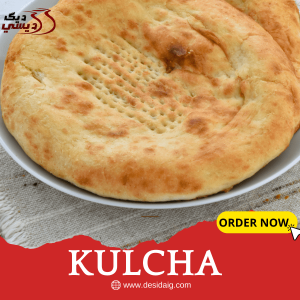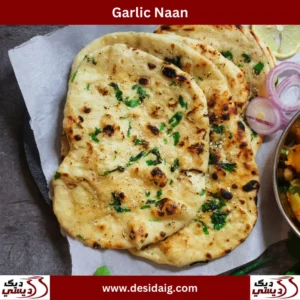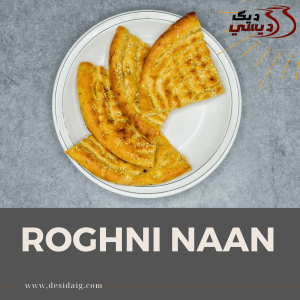Khameeri Roti
Explore the traditional flavors of Khameeri Roti, an ancient leavened bread from the Indian subcontinent. Made with whole wheat flour and natural yeast, this bread is known for its soft, spongy texture and slightly tangy taste, making it a delightful accompaniment to a variety of dishes.
Khameeri Roti, with its roots deeply embedded in the rich soil of Indian culinary history, is a testament to the timeless tradition of bread making that has flourished in the Indian subcontinent. This yeast-leavened bread, known for its soft texture and subtle tang, hails from the era of the Mughals, embodying the essence of Mughlai cuisine with every bite. In this exploration, we delve into the origins, preparation, and enduring appeal of Khameeri Roti, celebrating its place in the diverse tapestry of Indian bread.
The Heritage of Khameeri Roti
Origins and Cultural Significance
The journey of Khameeri Roti begins in the royal kitchens of the Mughal Empire, where it was savored by kings and commoners alike. The term ‘Khameer’ refers to the yeast used in the dough, a symbol of the fermentation process that imparts the bread its distinctive flavor and texture. This traditional bread has since traversed beyond the Mughal courts, becoming a cherished staple in North Indian households, especially in regions like Delhi, where it continues to be a culinary delight.
Crafting the Perfect Loaf
Ingredients and Methodology
The art of making Khameeri Roti starts with simple, wholesome ingredients: whole wheat flour, yeast, a touch of sugar to activate the yeast, salt for flavor, and water to bring the dough together. The process of kneading and leavening the dough is crucial, allowing the yeast to work its magic and create a soft, airy texture. Traditionally baked on a tawa (griddle) or in a tandoor, Khameeri Roti puffs up, developing a golden exterior and a fluffy interior, a hallmark of its perfection.
Serving and Pairing
Khameeri Roti’s versatility makes it an excellent companion to a myriad of dishes. It’s commonly served with rich, spicy curries, dal (lentils), grilled kebabs, and vegetable stews, offering a perfect vehicle to soak up the flavors. Brushing the roti with ghee or butter right off the tawa adds an extra layer of richness, enhancing its taste and aroma.
Nutritional Insights
Beyond its delightful taste, Khameeri Roti offers nutritional benefits. The whole wheat flour provides dietary fiber and proteins, making it a healthier alternative to refined bread. The fermentation process also adds probiotic elements, contributing to better digestion.
Conclusion
Khameeri Roti is not merely a bread; it’s a celebration of India’s rich culinary heritage, a bridge that connects the past with the present. Its preparation is a labor of love, a ritual that brings families together, and a dish that delights the palate. As we savor Khameeri Roti, we pay homage to the ancient traditions of Indian bread making, appreciating the simplicity and complexity of this beloved bread.
Khameeri Roti, translating to ‘yeast bread’, is a traditional form of leavened bread that originates from the Mughal era in the Indian subcontinent. This roti is made from a simple yet nourishing mixture of whole wheat flour, yeast, and water, allowing it to rise and develop its unique texture. The dough is left to ferment, which not only causes it to expand but also imparts a distinct tangy flavor. Once it’s perfectly risen, the dough is hand-rolled and then baked, resulting in a bread that is wonderfully soft and fluffy inside with a beautiful golden crust outside. Khameeri Roti pairs exceptionally well with rich, spicy curries and gravies, acting as a perfect vessel to soak up flavors and enhance your dining experience.
- Ingredients: Whole wheat flour, yeast, water, salt
- Cooking Method: Baked
- Serving Size: Individual rotis, approximately 6-8 inches in diameter
- Packaging: Packaged hot to maintain freshness and texture
| Calories | 110 kcal |
| Fat | 0.5 g |
| Fiber | 3 g |
| Carbohydrates | 22 g |
| Sodium | 200 mg |
- Soft and spongy texture
- Nutrient-rich with whole grains
- Complements a wide range of curries and dishes
- Contains Gluten










There are no reviews yet.